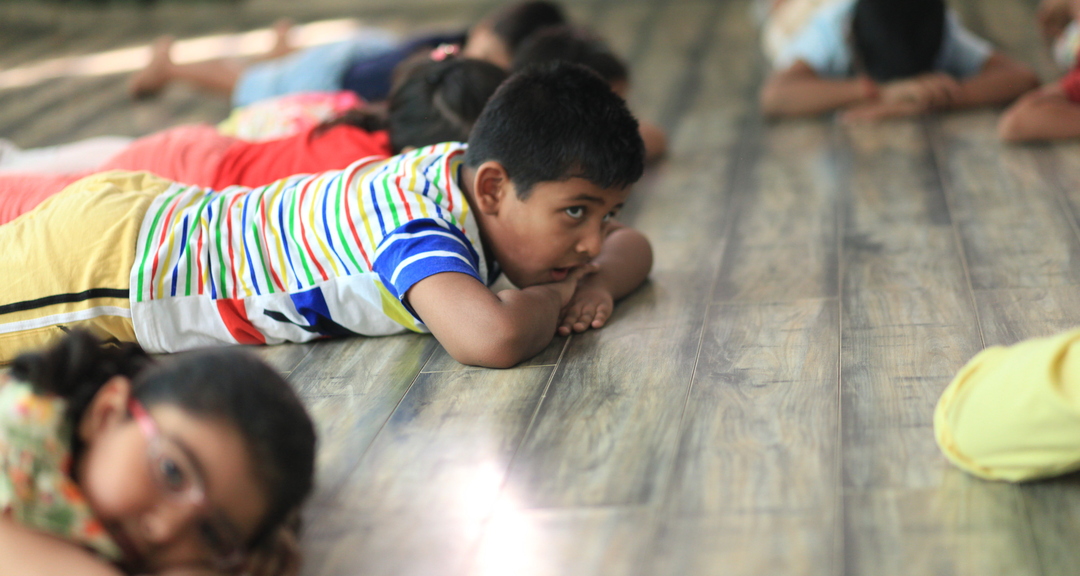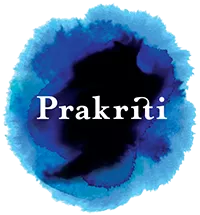
Every child has the right to quality education and learning (UNICEF)
ISCED, UNESCO (36th Session, Paris 2011) states Special Needs Education as “Education designed to facilitate the learning of individuals who, for a wide variety of reasons, require additional support and adaptive pedagogical methods in order to participate and meet learning objectives in an educational programme. Reasons may include (but are not limited to) disadvantages in physical, behavioural, intellectual, emotional and social capacities”.
However, the version of Special Educational Needs (SEN) differs with different countries. To some, it is limited to traditional disabilities. Others such as countries under OECD have recognized three cross-national categories: DDD – Disabilities (organic disorders attributable to motor, sensory, or neurological defects), Difficulties (learning difficulties because of behavioural or emotional disorders), and Disadvantages (attributed to socio-economic, cultural, and/or linguistic factors).
Whatever be the categories, the world is moving on from an era where disabled learners were separated from the mainstream and taught in specialized institutions with an entirely different curriculum. Today, the educational programmes for special needs education are becoming similar in curriculum with already existing regular education – advancing towards the path of inclusion.
Towards an Ideal System: Inclusive Education
The Inclusive Model of Special Education aims at welcoming and supporting all children to learn together, irrespective of their abilities or requirements. This includes appropriation of pedagogical approach, curriculum, therapies provided, school building and classrooms, playground, toilets and transportation at all levels for all children.
The model extends to special educational needs in teaching students with disability and their peers with no disability under the same roof in the least restrictive environment. The special needs and regular educators must work together to maximise the potential of all the students. Additional support in the form of resources (such as personal [IEPs, extra time], material [scribe, reader, using calculator, etc.] or financial resources), specially trained personnel and specialists (such as speech and physical therapists, intensive literacy coaches, etc.) are provided, either in the classroom itself or outside, depending upon the individual’s needs. More than 60 percent of students with disabilities in the US spend 80 percent of their day in regular classrooms (US National Center for Education Statistics).
“Inclusive education is not an optional extra, it is a basic necessity. We must put the most vulnerable at the heart of our actions to achieve a better life for all.”
– Androulla Vassiliou, European Commissioner for Education
According to an evaluation of 280+ studies conducted in 25 countries by Abt Associates, an inclusive education system promoted stronger math and reading skills, higher attendance, and graduation rates. The success of IE is credited in achieving the following cases:
– Educational Case: Improvement in learning for all students (with or without disabilities) by promoting individuality and equity through personalized and thoughtful instructions.
– Social Case: Promotion of social integration, understanding and respect for fellow learners and development of positive relationships with diverse peer groups.
– Economic Case: Contribution to the society (economically, socially, and politically) by equipping children with disabilities to work.
Adopting Inclusive Education in India
-
- Legality
As rightly said, “Inclusion is not tolerance, it is unquestioned acceptance”, the right to inclusive education for all persons with disabilities is recognized by the UN Convention on the Rights of Persons with Disabilities (CRPD). In India, the Rights of Persons with Disabilities Act, 2016 (RPWD Act) provides statutory backing to inclusive education. The Act covers the following specified disabilities – physical disability (locomotor disability, visual impairment, hearing impairment, speech and language disability), intellectual disability (Specific Learning Disabilities, Autism Spectrum Disorder), mental behaviour, chronic neurological conditions (Multiple Sclerosis, Parkinson’s disease), blood disorders (Haemophilia, Thalassemia, Sickle Cell Disease), and other disabilities. To learn more about the Act, visit: http://disabilityaffairs.gov.in/content/page/acts.php
-
- Success
However, in India, 89% of the kids with learning disabilities are enrolled in primary schools but only 8.5% go to secondary schools and only 2.3% reach higher secondary (Census of India). This is because of a lack of clarity on ‘inclusion’ for quality of education. Several inconsistencies exist in on-ground implementation of the laws. The RTE Act indirectly advances the Persons with Disabilities (Equal Opportunities, Protection of Rights and Full Participation) Act, 1995 (PWD Act, 1995) which focuses on ‘fitting disabled students into mainstream’ rather than ‘system adapting to their needs’.
-
- Problems
Some of the major problems in implementation of IE in India include no standard methodology for the identification of children with disabilities, limited choice for parents of children with disabilities, overworked teachers and special educators, and inaccessible infrastructure and curriculum (Vidhi Centre for Legal Policy).
The New Education Policy (NEP) has brought hope to the people for the educational revolution. With the recognition of RPWD Act, 2016, the NEP has recommended non-discriminatory environment in schools, use of Braille and Indian Sign Language for teaching, accessible infrastructure, and individualized support among others. However, for the education of children with special needs, it does not answer all the problems existing within a framework of grave policy gaps. In India, less than 40% of the schools have ramps. Access to basic amenities such as toilets are provided by around 17% of schools only. NEP has a great focus on use of technology in schools but only 59% of them have access to electricity.
-
-
- The special schools for children with benchmark disabilities are included but not recognized as schools. This leads us towards social isolation, and not inclusion. Introduction of ‘school complexes’ (schools within a 5-10-kilometer radius will be consolidated within one school complex) solves the problem of shortage of special educators and resources but aggravates the problems of safety concerns associated with transportation and travelling expenses.
- Another major concern surrounds the idea of viewing special education as a specialization for regular teachers. Several studies have documented that teachers in India do not have enough support in the form of adequate training, infrastructure, and others for inclusive education. Hiring in contract positions, lower pay grade, and hostile working conditions for special educators makes the situation worse.
- Further, NEP empowers PARAKH (National Assessment Centre) to provide accessible assessment guidelines to children with learning disabilities, thus marginalizing children with intellectual and cognitive disabilities. They do not find a place in NEP.
- Terminological inconsistency blatantly exists which has real-world implications. NEP is full of synonymous use of words – inclusion, integration, mitigation and rehabilitation, and disability, differently-abled, children with special needs and others. The error in word choice has several consequences on policies, societal recognition and stigmas, and adoption of inclusion as the way forward and not merely being a charitable cause.
-
Inclusion Strategies to make it happen in India
“In special education, there’s too much emphasis placed on deficit and not enough on strength.”
– Temple Grandia
Establishment of a successful inclusive learning environment is a complex process involving transformation of the whole education system. It requires coordinated efforts of administrators, schools and teachers, and families, altogether. Some inclusion strategies to make it successful are as follows:
- ACCESSIBLE SCHOOLS: The school must adopt the best practices and should be based on internationally accepted accessibility standards. They must accommodate the mobility, sensory, and other needs of disabled children.
- TEACHING AND SUPPORT STAFF: The pre- and in-service training pertaining to disability and inclusive education should be mandatory for all the staff members. The classrooms must have both the teachers – special education and regular working in harmony. Educators with disabilities must be hired to provide their unique insights and serve as role models.
- CURRICULUM DESIGN: Although provided with the provision of modification and adaptation, following the same curriculum by the disabled as their non-disabled peers is strongly recommended. A variety of techniques and resources can be utilized beforehand to keep the same pace. These include graphic organizers, visual, manipulative, text, and questioning techniques.
Adoption of an adaptable learning environment and UDL: Universal Design for Learning (UDL) aims at using a variety of teaching methods to build flexibility (i.e., adjusted for an individual’s strength and weakness) and remove barriers (for example, neurological disorders) to learning. Adopting UDL is an example of an adaptable learning environment and is essential for building awareness around differentiated learning.
Assessments and IEPs: Conducting regular assessments helps in determination of achievement of academic goals by the students. The educational objectives and expectations can be lowered or raised as per the requirement to sufficiently challenge without overwhelming children by organizing periodic IEP (Individualized Education Plan) meetings with students, their families and concerned teachers.
- SUPPORT OF GOVERNMENT: The Ministry of Education must refrain from dividing responsibilities of supporting disabled students among ministries because this segregation will aggravate the problem of shifting focus from catering to educational needs and inclusion approach to isolation. It must be responsible for the education of all the children going to school, irrespective of disability diagnosis and its severity.
Reallocation of budget: The budget for segregated schools must be redirected towards inclusive schools. The budget should be transparent and publicly available. The previously existing segregated and integrated schools must be transitioned into resource centres to provide guidance and technical support based on their past experiences and area of expertise.
- ADVOCATING FOR STUDENTS AND UPROOTING STIGMAS: It is essential to ensure the awareness among the school staff (administrators and regular educators), parents, and community members about the success and importance of an inclusive approach. The associated concerns must be proactively raised and discussed. The inclusion-focused developmental activities and practices should be encouraged. Parents must be actively involved to be a part of a student’s experience in school to facilitate learning. The disabled students must not be solely focused in the class to reduce unintended stigma.
- RECOGNITION OF COMPLETE SPECTRUM OF DISABILITY: The recognition of neurological disorders and others along with traditional disorders is important to unfold the complete spectrum of disability.
Under Cambridge Assessment International Education (CAIE), the learners with special educational needs are recognized by the following (including combinations):
-
-
- Behavioural and social skill difficulties: Includes self-regulation, getting along with others, etc.
- Communication or language disabilities: Either receptive or expressive (e.g., autism spectrum).
- Concentration difficulties: Attention deficit hyperactivity disorder (ADHD) or attention deficit disorder (ADD) and other neurological disorders.
- Executive functions: Difficulties in understanding, planning and organizing.
- Hearing impairments: Hearing loss and deafness, either congenital or acquired.
- Literacy and language difficulties: Includes problems in reading, spelling and writing (for example, dyslexia and dysgraphia).
- Numeracy difficulties: Struggle with tasks related to numeracy and mathematics competency (for example, dyscalculia).
- Mental health issues: Includes depression, anxiety, etc.
- Physical or neurological impairments Can be congenital or acquired (for example, muscular dystrophy or traumatic brain injury).
- Visual impairments: Eye condition or disorder.
-
Inclusive Education at Prakriti
At Prakriti, the ‘Bridge Programme’ focuses on inclusive education for the children with special needs. BRIDGE@PRAKRITI assists children to close the gaps in their learning and to integrate them into the mainstream by offering one-to-one sessions within a school setup. A skilled team of ABA (Applied Behaviour Analysis), Speech, Vocational and Occupational Therapists as well as Special Educators make it a customized support system.
To know more about this programme Visit Us
